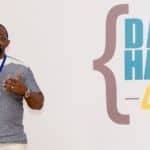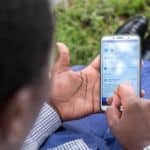Three Keys to Scaling Technology in Africa
Editor’s note: Since March 2015, Zelda Moran has worked with founder Peter Klatsky and an implementing partner, Baylor Uganda, on Mama Rescue, a cloud-based transport voucher and emergency dispatch system improving access to transport for mothers in rural Uganda. Deaths from common complications like hemorrhage, eclampsia, sepsis and birth asphyxia, along with lifelong morbidities such as fistula, are all preventable if mothers and their babies reach care quickly.
After hearing about the impact of Mama Rescue firsthand from midwives and transport providers in May of last year, UNICEF and the Ugandan Ministry of Health decided that the Mama Rescue voucher platform should be scaled up and incorporated into FamilyConnect, a national eHealth program developed by UNICEF and the Praekelt Foundation set to launch in 2017. Over the past few weeks, Praekelt, Moran and the Mama Rescue team have worked together to explore how to scale this lifesaving technology to the entire country of Uganda and potentially even beyond. Here, Moran shares how she became involved with Mama Rescue and her vision for its future.
(Due to the Labor Day holiday weekend in the U.S., NextBillion won’t be publishing our usual Weekly Roundup post today, or any new articles on Monday. We’ll return to our regular coverage on Tuesday.)
I’ve heard stories of women walking for hours toward health facilities until they finally give birth on the side of the road. I’ve heard stories of women who labor at home because transport is too difficult to find or afford. Now, I hear stories of women who call for transport as soon as they feel labor pains, and are referred to the hospital as soon as anything goes wrong.
We’ve always dreamed of bringing Mama Rescue beyond its pilot district of Kasese, and we have learned that there are a few key elements to successfully scaling technology. Here are three keys:
Integrate with Existing Infrastructure
Users must be able to use tools that they already own and are comfortable with. Mama Rescue currently runs on existing MTN phone lines, and basic feature phones which people already own. Praekelt’s work on the South African Department of Health’s MomConnect platform helped enroll women from 98 percent of public health facilities across South Africa. The scale of MomConnect is largely enabled by integrating with all the country’s telecom companies, an important next step for MamaRescue. It’s important to be confident that the technology can be used by anyone with a phone, anywhere with network coverage.
Leverage Existing Knowledge
Using language and vocabulary that health workers and patients are familiar with is vital to a health communication platform. Depending on the area, services must be translated into multiple local languages, and health workers must be able to use terms they are familiar with. As the Praekelt Foundation rolls out its maternal health platform in Uganda early next year, it will be designed to work in areas where English is not commonly used, and even phone literacy may be low. Working with health workers and facilities to make the application relevant to their needs will require input and feedback. Designing HelpDesk functions and interactive motivational messaging programs for nurses will assist greatly in gathering this important information from local health workers.
Build Within Existing Systems
Mama Rescue uses boda-bodas (motorcycle taxis), special-hire drivers and ambulances to transport mothers from home to health center, and from health center to hospital. We simply engaged the transport providers who were already serving the community and offered a better way for health providers and mothers to call on them. It’s important to remember that transport may look very different district by district, even town by town. Motorcycles may not be present in some areas – perhaps people use donkeys, horses, rickshaws or exclusively cars. The technology must be adapted to solutions which people have already found.
Working with both the advantages and constraints of the technology, health and health-systems fields is both exciting and challenging, and the idea of a national-scale Mama Rescue program is entirely different from our current single-district project. Partnering with the Praekelt Foundation will help make it a reality. When successfully integrated, Mama Rescue and Praekelt will work together to provide a system for connecting expectant mothers and families to valuable information about their pregnancies. All mothers in Uganda will have access to the information necessary for a safe delivery; Mama Rescue will handle the logistics.
Homepage photo credit: United Nations Photo, via Flickr.
Zelda Moran has been working with founder Dr. Peter Klatsky and local implementation partner Baylor Uganda on Mama Rescue since its launch in March 2015.
A version of this blog originally appeared on the Praekelt Foundation website.
- Categories
- Health Care, Technology



